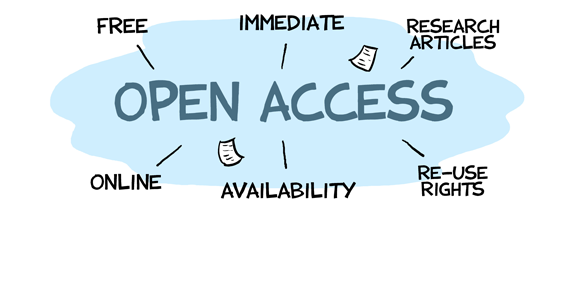You have to research for a science project that is worth seventy-five percent of your final grade. Your topic is a little tricky to research and the Internet is not helping you at all… that is until you find the jackpot: all the information you need in one article. It’ll look perfect on the citation list.
It is often challenging to find a trustworthy and up-to-date article on the topics we research about. It is even worse when you find the title of an article that apparently holds exactly what you need, but it turns out you have to pay $50 to access the information.
However, it is always pleasant to stumble upon an article published in what is known as an “Open Access journal.”
“Open Access (OA) refers to free, unrestricted online access to research outputs such as journal articles and books. OA is open to all, with no access fees,” as defined by Springer Nature, a global publisher that assists and supports the research community.
OA aids researchers in sharing their works with the whole world and increases their opportunities of getting noticed, i.e., of being cited by others. And the best part about OA is that, under an Open Access, CC-BY license, researchers own the copyright to their work!
Moreover, OA grants opportunities for other researchers because they can read already-published findings and then build their own experiments, thus accelerating scientific advancement.
If OA is that advantageous, why doesn’t the entire research community adopt it? In reality, the debate over whether or not OA is the best way to publish scientific data online is traced back to two conflicting perspectives: The U.S.A’s and Europe’s. Full debate details aside, it was rumored in the U.S. that federally-funded research should be free to read as soon as they are published – a contemplation that sparked the refusal of publishers because, according to them, it would “tip the business into chaos.”
The choice of journal depends on different factors, one of them being the cost. Conventional journals may charge a small fee per page or per color figure while OA journals charge researchers a fee (that can sometimes amount to thousands of dollars) to publish their works. The cost can significantly vary between conventional journals and OA journals, hence influencing a researcher’s choice.
Furthermore, researchers also consider prestige when they are looking for a journal to publish in; they perceive the quality of OA publications to be less than that of conventional journals. That perception is faulty since some journals have a high Impact Factor (IF). The IF assesses the relative importance of a journal within its respective field and measures the citation frequency of its “average article” within a certain time frame. Luckily, there are a lot of high-IF OA journals for science.
Unfortunately, evil can also be found in the world of scientific publishing. We call it “predatory journals”. Unlike OA journals, which uphold high standards for peer reviews and editing, predatory journals exploit researchers by asking them to pay a fee and then they publish the researchers’ works without peer reviews or editing, leaving a lot of room for false information.
There are surefire indicators to know if an OA journal is reputable or not. The main one is if the journal can be found in The Directory of Open Access Journals (www.doaj.org), an online directory that provides a list of OA and peer-reviewed journals.
Henceforth, it is safe to gather information from and publish in high-IF OA journals. It is also possible to check “Beall’s List of Predatory Journals,” referred to by Yale University and last updated on the 18th of November 2020, for reputability.
OA has without doubt pushed the world of scientific publishing onto a new path that remains unappealing to many. OA sure is the “bump key to scientific information” because it opens all the doors standing between the public and the scientific data, and in a world where people can and want to access all kinds of information, it is better to make the trusted information accessible for the sake of everyone’s safety.
